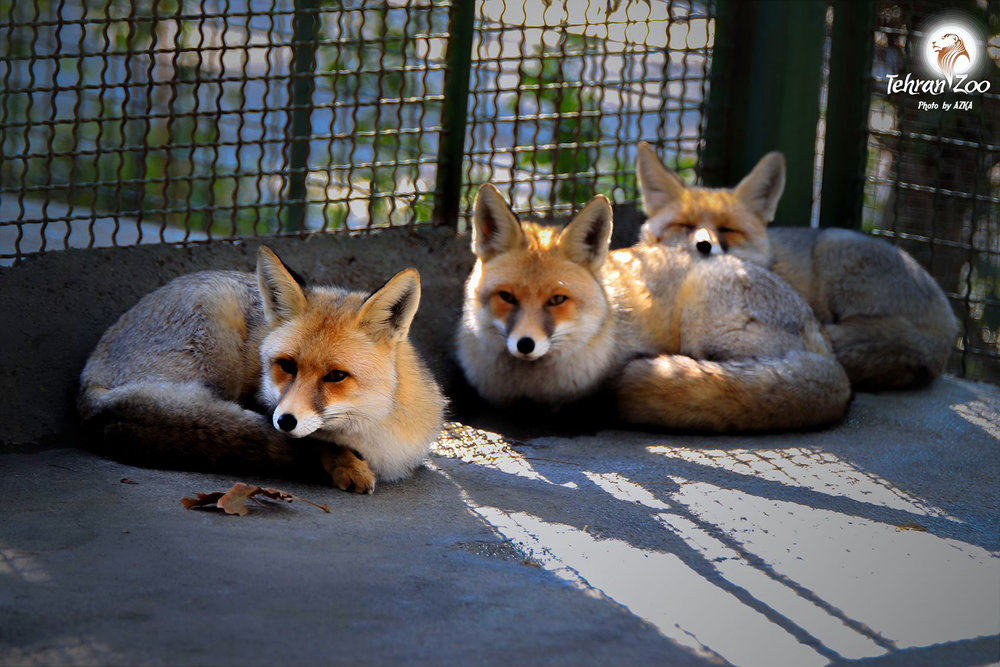The importance of common fox in Iran

The ecology of the common fox is of interest because of high adaptability. This species is found in all regions of Iran with the exception of the northern forests and the drier parts of the central deserts, where it is replaced by the sand fox. In Europe common fox (or red fox) is a reddish color but in Iran it is usually a buff grey-brown with a browner back. In North America, however, there are many distinct color varieties, with up to 20 percent of red foxes being black or silver.
Common features
The largest foxes occur in Europe but common foxes in Iran reach a length of 75 to 120 cm and weight of 5-10 kg. The fox’s sharp features and smart nature contribute to its reputation as a wanton predator. But contrary to popular opinion, foxes rarely kill more than they need.
Foxes in Iran are often seen in farmland in search of rodents, they are also likely to feed on melons, scavenge in refuse dumps, or track hares and other small mammals, especially when there is snow on the ground. It is probably difficult for people to admire an animal so smart and adaptable that is able to live almost anywhere that they can. Foxes in Iran are trapped, shot, and hunted almost everywhere they occur, and yet they still manage to thrive.
Foxes in Iran such as other places are detested by farmers and is persecuted throughout much of its range because of its predatory habitats and the risk of transmitting rabies. As foxes’ diets and their hunting and foraging techniques vary as much as their habitat so they are considered messy eaters. In temperate climates in late summer many foxes exist almost entirely on sugary fruits such as apples but on warm, humid evenings in summer when earthworms come to the surface on open grassland and pasture, a fox can eat enough in an hour to keep it going for the whole day. At other times foxes are more intensive, they stalk, chase, and pounce on prey including voles, rabbits, frogs, and birds.
Common foxes in hennery cause serious economic losses and that’s why they do not have good reputation. As an opportunist, a fox will also take advantage of road-kills and refuse. Excess food is usually stored, bones and bits of meat are buried in the ground to be dug up and eaten later. Rotten meat does not appear to do foxes any harm.
Contrary to popular opinion, foxes are not wanton killers and will rarely kill more than they need. Stories of foxes running amok in chicken runs and killing dozens of birds at a time have more to do with the unnatural conditions in which chickens are kept than the fox’s killer instincts. In a run where chickens live at high density and have no way of escaping, a fox cannot simply make a kill and slink away to eat in peace. A flock of panicking birds causing mayhem all around sends the fox into a frenzy. As long as the chicken farmer ensures his enclosures are fox-proof, the problem does not arise.
Why foxes are important?
There are more than 20 species of foxes. Foxes eat almost anything, including small mammals, birds, reptiles, insects, worms and fruit. The common fox is considered by some as pest species, being an opportunistic hunter of game birds, ground-nesting birds and small mammals, often killing animals’ surplus to its needs. In addition, it is a potential carrier of a number of zoonotic diseases, for example classic rabies virus, Echinococcus multilocularis and Trichinella spiralis.

One of the most serious and widespread threats to foxes other than human persecution is the rabies virus. Rabies is found in much of the world’s fox population, except in Britain whose strict quarantine laws have kept the disease from becoming established. But Common fox (who also known as red fox) considered as a terrestrial apex predator. Apex or top predators control the abundance of their prey.
Gizmodo website says: “To understand why Earth's top predators matter and why they're vulnerable, you must consider basic terms. There’s simply not that much energy left for top predators. What's more, top predators are typically energy-hoarders: They're large, and need to eat lots of calories in order to hunt.”
The best available research (The fox project of UK) indicates 95% of an average rural fox’s diet consists of meat, both hunted and scavenged, and mainly rabbits, rats, birds and small mammals. Insects and worms may constitute another 4% and the remaining 1% may consist of fruit. However, in an urban area, natural prey and scavenged meat may cover only 55% of diet. Insects and worms add a hefty 20%, fruit – 7%, with household leftovers making up the remaining 18%.
When an ecosystem loses key species such as common fox, it triggers what ecologists call a trophic cascade—a butterfly effect that spirals down the food chain. A well-documented case study for this phenomenon is the gray wolf, once among the world's most widely distributed mammals. Prior to their extirpation, North American gray wolves were a key predator of deer, elk, moose, bison and caribou, as well as numerous smaller mammals. Following the wolves disappearance, the abundance of deer skyrocketed, with some populations climbing to six times their historical size.
Disappearance of common fox also have potential of disrupting the balance. Common fox’s function as an apex predator control the abundance of their prey and thus help to maintain a balance of nature.
